Need more fiber? Dietitians share which high-fiber fruits to add to your diet.
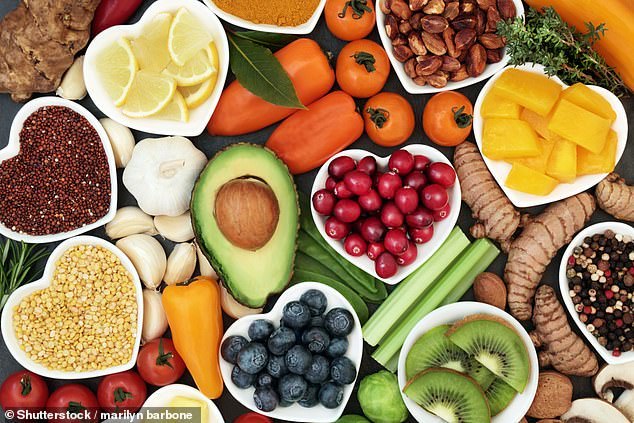 Fiber is an important part of a healthy diet because it helps keep us regular and feeling full. It has a number of other health benefits for the body, from the gut to the heart. But most Americans don’t eat nearly enough of it.
Fiber is an important part of a healthy diet because it helps keep us regular and feeling full. It has a number of other health benefits for the body, from the gut to the heart. But most Americans don’t eat nearly enough of it.
Dietary fiber is the part of plant foods — fruits, vegetables, legumes, and whole grains — that the body can’t break down or digest.
There are two types: soluble and insoluble. Soluble fiber dissolves in water and bodily fluids, forming a gel-like substance as it passes through the body, which slows down digestion. Insoluble fiber does not dissolve and instead absorbs fluids and other materials, which increases stool bulk. Together, these types of fiber help the body remove waste, maintain bowel health, aid with digestion, and manage blood sugar levels.
“Fiber is such a nutrition superstar … it benefits our health in so many ways,” Frances Largeman-Roth, registered dietitian nutritionist author of Everyday Snack Tray.
What Are the Benefits of Fiber?
 Fiber is most known for its role in digestion, since it helps keep you regular,” says Natalie Rizzo, registered dietitian and nutrition editor for TODAY.com.
Fiber is most known for its role in digestion, since it helps keep you regular,” says Natalie Rizzo, registered dietitian and nutrition editor for TODAY.com.
Insoluble fiber helps bulk stool and makes it softer and easier to pass, which helps normalize bowel movements. It can also help the body process waste, prevent constipation and reduce the risk of colorectal conditions like hemorrhoids, per the Cleveland Clinic. A fiber-rich diet has been associated with a reduced risk of colorectal cancer, says Largeman-Roth.
“Fiber is also vital for a healthy gut! A healthy gut impacts inflammation, skin health, immunity and even mental health,” says Largeman-Roth. Soluble fiber can help feed good gut bacteria that lives in the colon, nourishing the gut microbiome. It has been shown to help lower cholesterol levels, Largeman-Roth adds.
A fiber-rich diet has also been associated with a reduced risk of colorectal cancer, says Largeman-Roth. Fiber can also promote heart health, the experts note. Soluble helps clear bad (LDL) cholesterol from the body, and studies have linked eating fiber with lower cholesterol levels, says Rizzo.
Fiber, particularly soluble fiber, can slow the absorption of sugar and help lower blood glucose levels, per the Mayo Clinic, and it may reduce the risk of type 2 diabetes, says Largeman-Roth.
“It delays gastric emptying, meaning that fibrous foods stay in the stomach longer and help keep you feeling full between meals,” says Rizzo. This can aid with weight management and weight loss.
How Much Fiber Do You Need?
The daily recommended intake of fiber is about 14 grams per 1,000 calories of food, according to the U.S. Department of Agriculture. “This would be about 28 grams for the average person eating 2,000 calories a day,” says Largeman-Roth. According to the Institute of Medicine’s Dietary Reference Intake Guidelines, daily fiber intake varies by age and sex:
Adults ages 50 or younger
Men: 38 grams
Women: 25 grams
Adults ages 51 or older
Men: 30 grams
Women: 21 grams
“In general, to simplify, I usually recommend to strive for 30 grams a day or more for adults,” says Largeman-Roth.
How Many Servings of Fruit Should You Eat?

Generally speaking, people should aim to eat at least two servings of a variety of fruits per day. “Keeping in mind that the goal is to get five to seven servings of fruits and veggies total each day, try to get about half of that as fruit servings,” says Largeman-Roth.
One serving of fruit translates to about 1 cup of fresh fruit, one-half cup of dried fruit or 1 cup of 100% fruit juice, says Rizzo.
However, the recommended number of servings of fruit to eat every day can also vary depending on your daily caloric needs, per the USDA. The number of calories a person needs in a day depends on their age, sex, and activity level, says Largeman-Roth.
Fiber-rich Fruits
All fruits — fresh, frozen, and dried — will provide fiber, but some pack more than others. In general, fruits that are eaten with their peels, such as berries, tend to be higher in insoluble fiber.
Here are 11 dietitian-approved high fiber fruits to add to your diet for gut and heart health.
 Pears
Pears
“Many people like pears because they are sweet and tender, but people don’t realize they are also rich in fiber,” says Rizzo. One medium pear, per the USDA, provides 6 grams of fiber, which is about 20% of the daily fiber value for most adults. Pears are also a good source of vitamin C, says Rizzo, as well as minerals and other nutrients. “This juicy fruit also provides 190 mg of potassium per medium pear,” says Largeman-Roth.
“There are also many varieties of pears that vary in texture and flavor, so you can pick the one you like best,” says Rizzo.
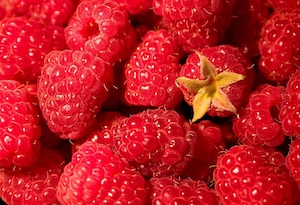 Raspberries
Raspberries
Raspberries are bursting with flavor as well as fiber and other nutrients. “These jewel-like berries pack in the fiber, 1 cup offers 8 grams with just 64 calories,” says Frances Largeman-Roth. They’re an excellent fruit choice to increase your fiber intake and get a boost of antioxidants, vitamins, and minerals.
One cup of raspberries provides 186 milligrams of potassium, which is important for heart function, says Largeman-Roth. Low in calories and fat, these bright pink berries are a great snack on their own or as a topping to add natural sweetness to oatmeal, yogurt, or cereal.
 Apples
Apples
An apple a day may keep the doctor away and constipation at bay. One medium apple (with the peel) provides about 4 grams of fiber, says Largeman-Roth. “Make sure you eat the skin because that’s where the fiber is,” says Rizzo. Apples are rich in vitamins C and E, and contain the antioxidant flavonoid quercetin, which may help protect cells in the pancreas from cancer, says Largeman-Roth.
 Blueberries
Blueberries
Blueberries are small but mighty nutritional powerhouses packed with fiber and other nutrients. Just 1 cup of blueberries provides about 4 grams of fiber, according to the experts. “They are also rich in anthocyanin, an antioxidant that reduces inflammation,” says Rizzo.
The anti-inflammatory benefits from blueberries can provide protection against heart disease, cancer and Alzheimer’s, says Largeman-Roth. Blueberries are also a good source of vitamins C and K, manganese, and polyphenols, which are beneficial plant compounds, TODAY.com previously reported.
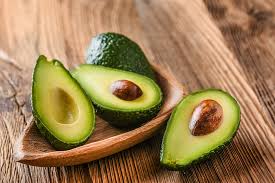 Avocado
Avocado
While it’s often thought of as a vegetable or an in-between type of produce, avocados are technically fruits! “They’re so rich and creamy, you wouldn’t know that avocados are packed with fiber,” says Largeman-Roth.
One serving of raw avocado (which is about one-third of a whole fruit) provides about 3 to 4 grams of fiber, per the USDA. A serving of avocado also provides 5 grams of heart-healthy monounsaturated fat and 254 milligrams of potassium, says Largeman-Roth. The creamy, mild fruit can be eaten on its own with lemon and salt or on top of salads and rice bowls, mashed into guacamole, or even blended with cocoa into a rich avocado chocolate pudding.
 Guava
Guava
This delicious tropical fruit is also packed with fiber. Just 1 cup of guava provides a whopping 8 grams of fiber, per the USDA. Guava is naturally low in fat and calories, and rich in vitamin C, potassium, minerals, and other nutrients.
The brightly-colored sweet fruit is also a great source of carotenoids, antioxidants which help battle free radicals and protect against damage from oxidative stress — this lowers your risk of many diseases, per the Cleveland Clinic.
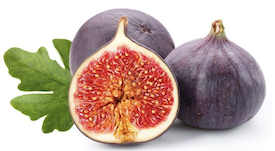 Figs
Figs
Figs are a delicious, mild fruit with many health benefits. Three to five fresh figs boasts about 5 grams of fiber, making them a great source of dietary fiber, says Largeman-Roth. They’re also rich in antioxidants, minerals and other nutrients. “One serving of figs provides the same amount of calcium as a half cup of milk,” says Largeman-Roth.
Fresh figs can be enjoyed on their own, on top of yogurt and salads, or stuffed with feta or goat cheese for a delicious salty-sweet snack.
 Oranges
Oranges
Oranges are packed with fiber, nutrients and are a very convenient fruit to pack and eat on the go. One large orange provides about 4 grams of fiber, says Largeman-Roth. Oranges are known for being an excellent source of vitamin C, as well as potassium, magnesium and other antioxidants, says Rizzo. Plus, oranges are naturally low in calories and “they are almost 90% water, so they contribute to hydration,” says Rizzo.
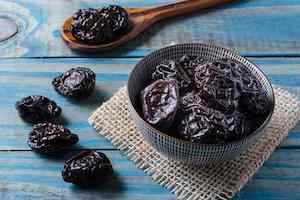 Prunes
Prunes
Prunes, which are technically dried plums, often get a bad rap or are stereotyped as a food that old folks use to stay regular — but their colonic benefits are nothing to joke about. These sweet, nutritious dried fruits are a great source of soluble and insoluble fiber.
“Prunes are a good fiber source, with 3 grams of fiber per one serving (four to six prunes) and prebiotic-containing prunes are also especially good for the microbiome,” says Largeman-Roth. Research has tied eating prunes regularly with a healthier gut microbiome, especially in post-menopausal women, she adds. Prunes are rich in potassium and other nutrients. “Eating prunes is also beneficial for keeping bones strong,” says Largeman-Roth.
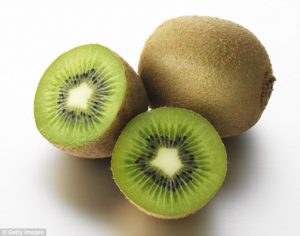 Kiwi
Kiwi
Kiwis or kiwifruits are tangy and packed with fiber and other nutrients. One raw kiwifruit provides a little over 2 grams of fiber, according to the USDA. “But they (kiwis) are small so feel free to eat two,” says Rizzo. One kiwi also provides 100% of your daily value of vitamin C, Rizzo adds. Don’t let the fuzzy, hairy peel deter you — the skin is edible and contains extra fiber and nutrients!
 Strawberries
Strawberries
Strawberries are a favorite summertime snack. “All those tiny dots that you see on the surface of your strawberries are seeds, which add up to over 3 grams of fiber per one serving (1 cup),” says Largeman-Roth.
Strawberries are rich in antioxidants, which protect cells from damage, as well as manganese, folic acid, potassium, per the Cleveland Clinic. “Strawberries also have a brain health benefit. Consuming them regularly can help older people improve their memory,” says Largeman-Roth.
And there are even MORE to consider: What Is the Healthiest Fruit? The No. 1 pick … according to a dietitian!
Go ahead – Click on the link directly above ~ it’s Juicy!
Written by Caroline Kee for TODAY ~ June 8, 2024
